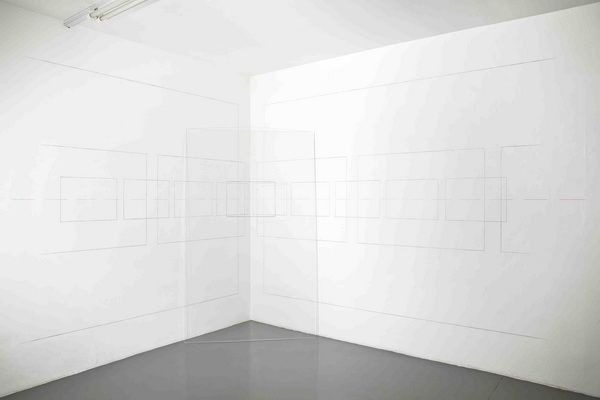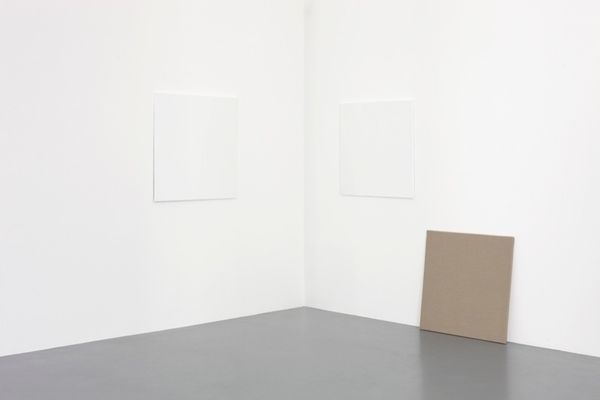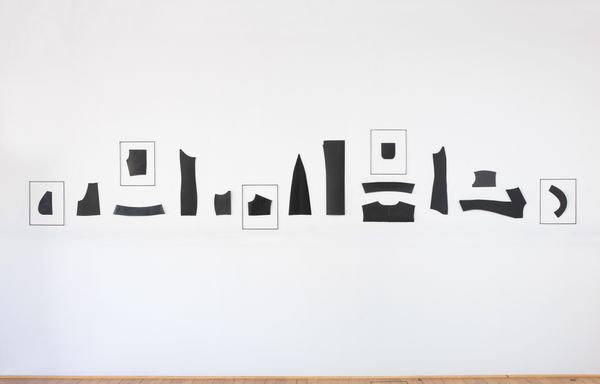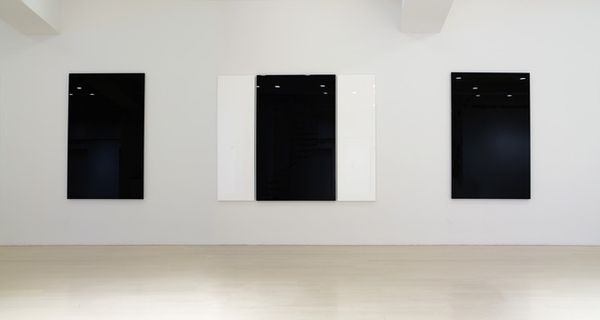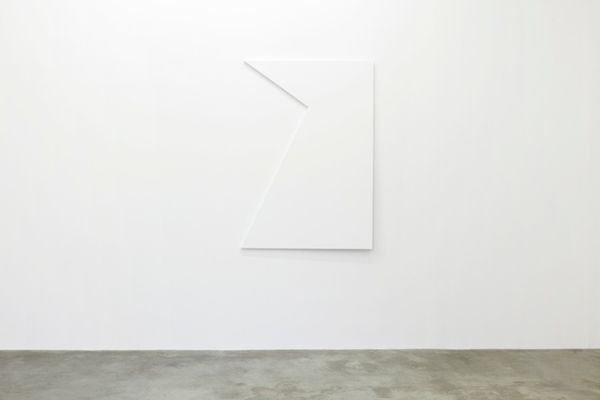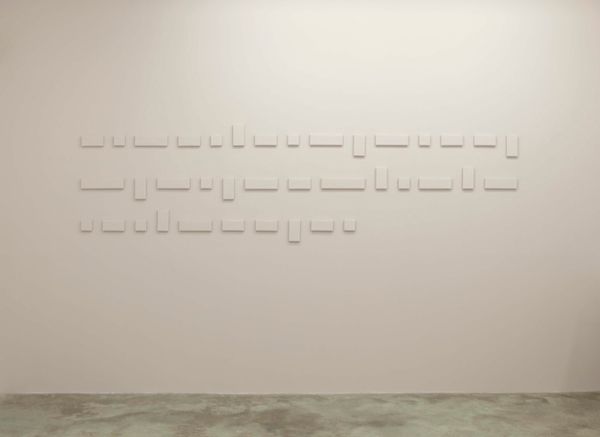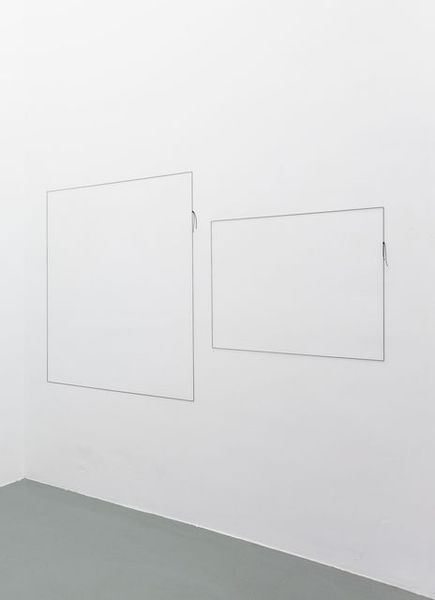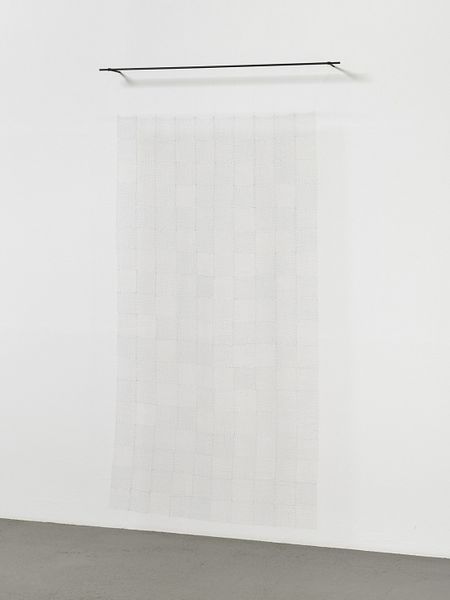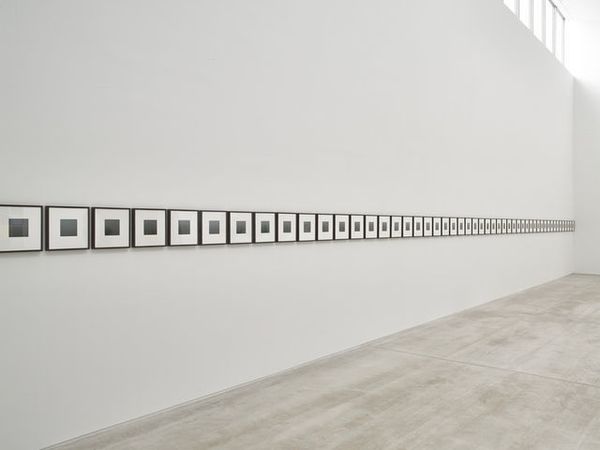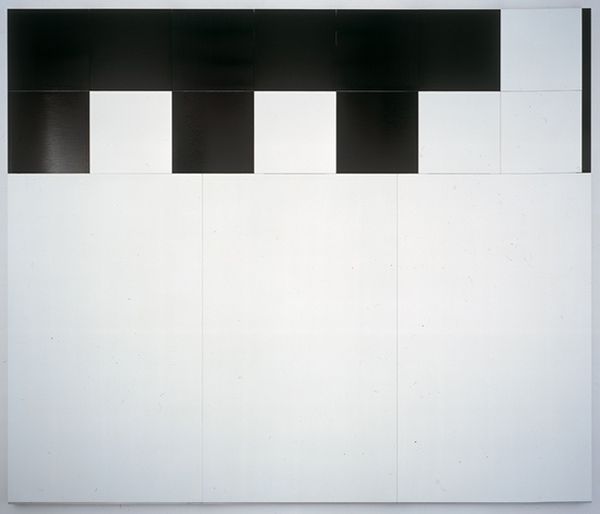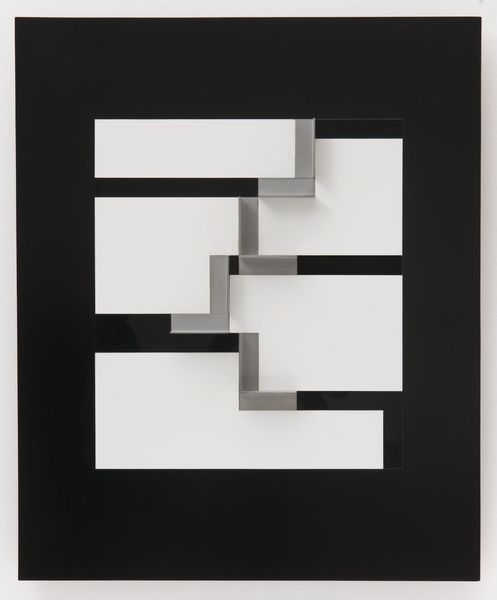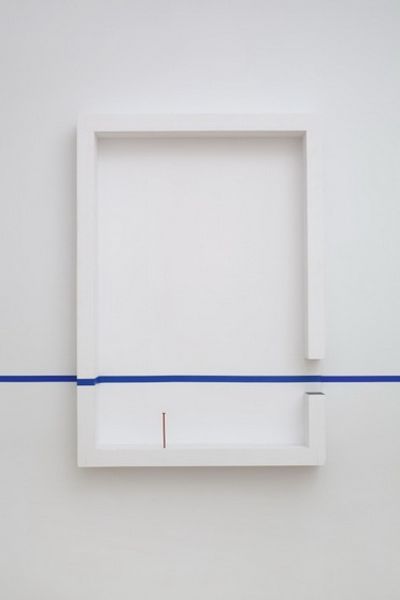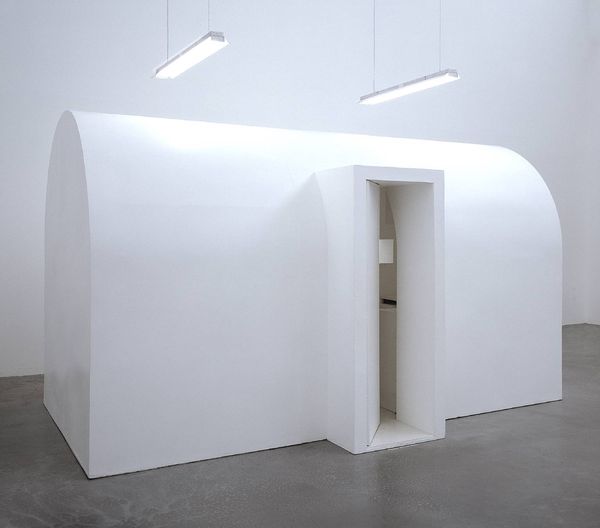
mixed-media, sculpture, installation-art
#
mixed-media
#
minimalism
#
geometric
#
sculpture
#
abstract-art
#
installation-art
#
line
#
abstract art
#
monochrome
Copyright: Claude Rutault,Fair Use
Editor: This is Claude Rutault's "dé-finition/méthode #77: changement / invariance 1," created in 1975, a mixed-media installation. It feels... strangely calming, almost meditative, despite the rigid geometric forms. What underlying concepts can we decipher from its symbols? Curator: Calm, yes, but perhaps a deceptive calm. Think of the geometric shapes as echoes – resonating with Platonic ideals yet firmly rooted in the physical world, altered slightly through their arrangement. Rutault's use of simple shapes like squares and circles aren't merely aesthetic choices. What memories, shared histories do these geometric forms trigger? Editor: I see your point. Squares and circles are so fundamental, they must tap into something primal. I think of early constructions, shelters and symbolic mandalas...Is it intentional to conjure such varied references, even opposing ones? Curator: Intention is always a complex question, isn’t it? Rather than pinning down Rutault's precise intention, perhaps we can ask, how does the interplay between these forms invite us to re-evaluate their perceived cultural stability? The monochrome white could symbolize purity, a blank slate for reassessment... but what do you make of the emptiness dominating half of the wall space? Editor: That negative space makes me uneasy – like something is missing. Maybe that incompleteness challenges our expectations of balance and completeness? Curator: Exactly! That absence, that emptiness, can be seen as an active force, prompting the viewer to question what should be there, what narratives or assumptions are being deliberately omitted. In what ways, could such minimalism act as resistance to visual overload, urging us to notice what we typically overlook in the broader culture? Editor: It's interesting to think about minimalism not just as an aesthetic, but also as a way of altering how we relate to images and their meaning. Curator: Indeed. Hopefully this helped appreciate the profound power residing within even the simplest artistic statements.
Comments
No comments
Be the first to comment and join the conversation on the ultimate creative platform.
